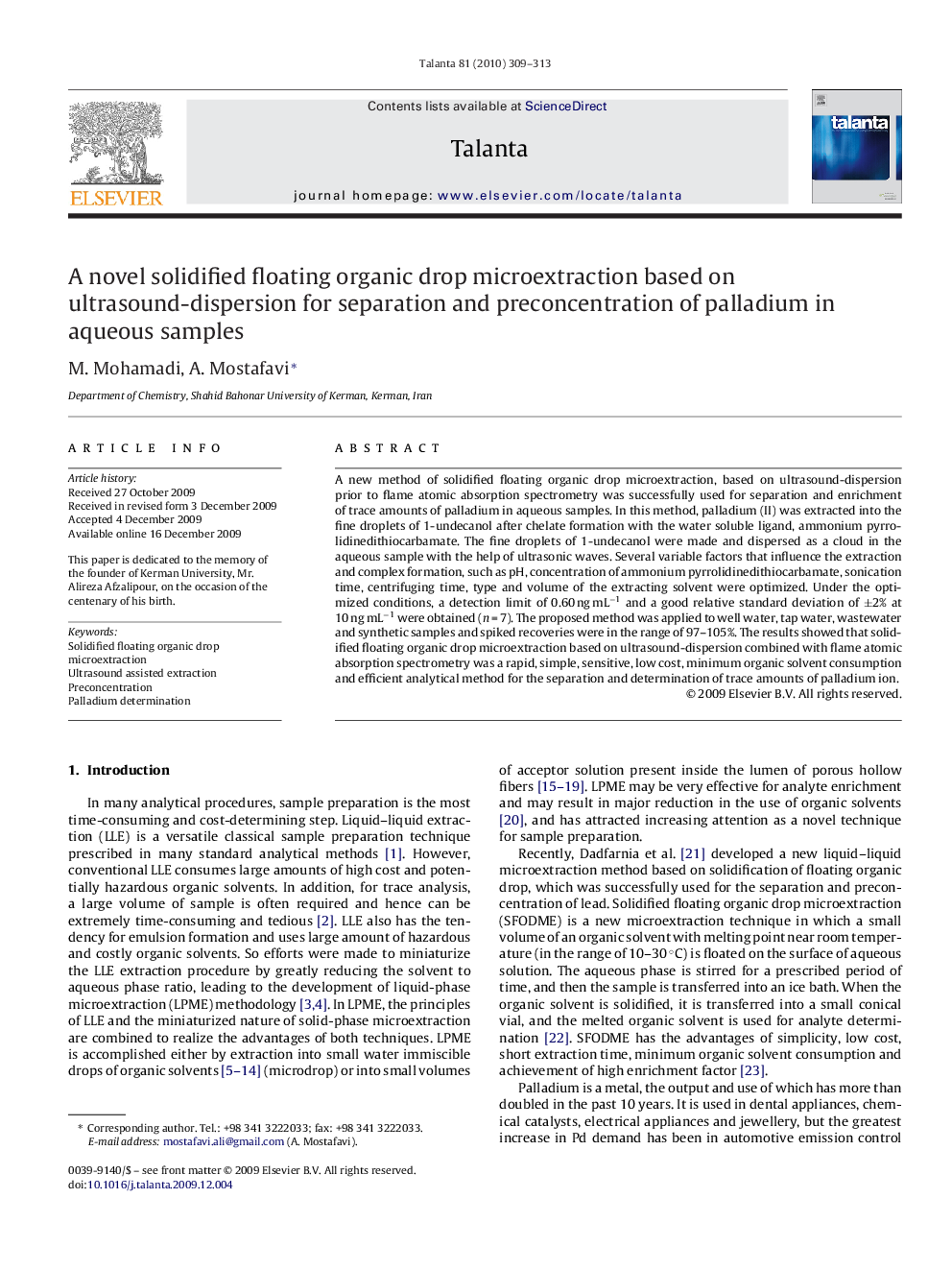| Article ID | Journal | Published Year | Pages | File Type |
|---|---|---|---|---|
| 1246649 | Talanta | 2010 | 5 Pages |
A new method of solidified floating organic drop microextraction, based on ultrasound-dispersion prior to flame atomic absorption spectrometry was successfully used for separation and enrichment of trace amounts of palladium in aqueous samples. In this method, palladium (II) was extracted into the fine droplets of 1-undecanol after chelate formation with the water soluble ligand, ammonium pyrrolidinedithiocarbamate. The fine droplets of 1-undecanol were made and dispersed as a cloud in the aqueous sample with the help of ultrasonic waves. Several variable factors that influence the extraction and complex formation, such as pH, concentration of ammonium pyrrolidinedithiocarbamate, sonication time, centrifuging time, type and volume of the extracting solvent were optimized. Under the optimized conditions, a detection limit of 0.60 ng mL−1 and a good relative standard deviation of ±2% at 10 ng mL−1 were obtained (n = 7). The proposed method was applied to well water, tap water, wastewater and synthetic samples and spiked recoveries were in the range of 97–105%. The results showed that solidified floating organic drop microextraction based on ultrasound-dispersion combined with flame atomic absorption spectrometry was a rapid, simple, sensitive, low cost, minimum organic solvent consumption and efficient analytical method for the separation and determination of trace amounts of palladium ion.
